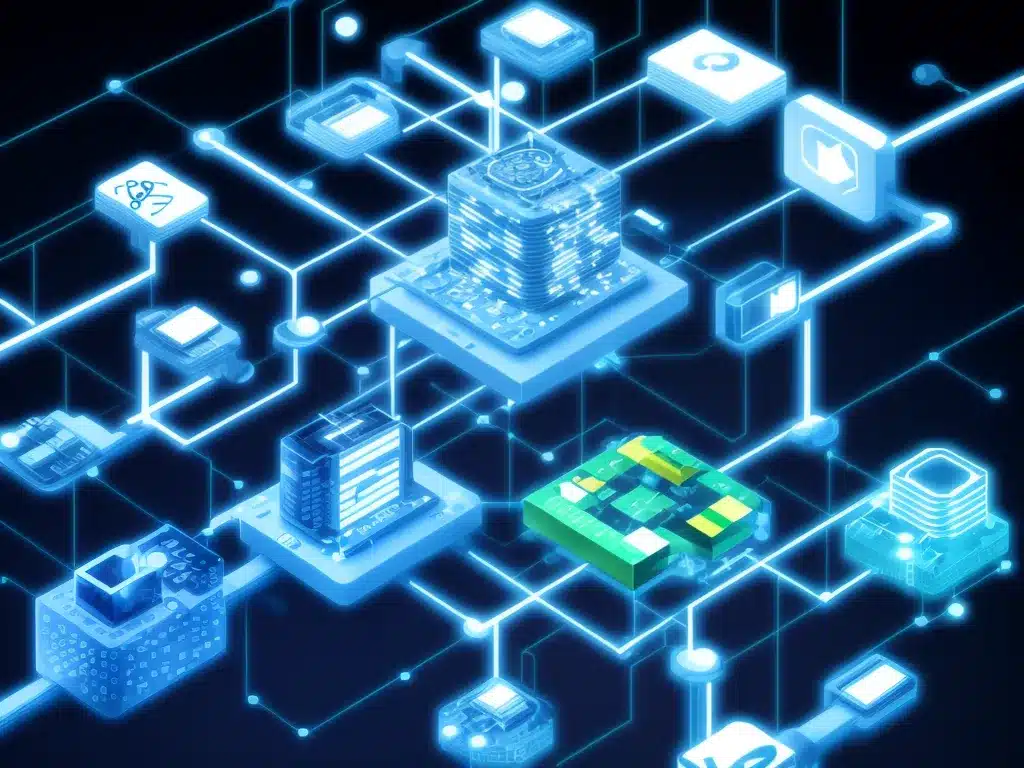
How Blockchain and IoT Combine in 2024
Introduction
The year 2024 will see an explosion in the combination of blockchain technology and the Internet of Things (IoT). As these two innovative technologies mature, their integration will enable breakthrough applications across industries like supply chain, healthcare, energy, and more. In this article, I will provide an in-depth look at how blockchain and IoT will combine in 2024 to create a more connected, transparent, and trustworthy world.
Growth of IoT and Blockchain Separately
The Internet of Things has been growing exponentially over the past decade. There are now over 25 billion connected IoT devices worldwide and this number is expected to surpass 75 billion by 2025. IoT devices like smart home appliances, wearables, and industrial sensors generate huge amounts of data that can provide valuable insights for individuals, businesses, and society. However, realizing the full potential of IoT data has been hindered by security and privacy concerns. This is where blockchain comes in.
Blockchain, the distributed ledger technology underpinning Bitcoin and other cryptocurrencies, has also seen massive growth and investment in recent years. The transparent, immutable, and decentralized nature of blockchain establishes trust, accountability, and security that is lacking in centralized systems. Blockchain adoption has spread across financial services, government, healthcare, retail, and more. By 2024, spending on blockchain solutions is projected to reach almost $20 billion annually.
Combining Blockchain and IoT
By 2024, we will see popular platforms and protocols that seamlessly integrate blockchain with IoT devices and networks. Here are some key benefits this integration will provide:
Enhanced Security
Blockchain’s cryptographic foundations will secure IoT networks and ensure data integrity. Smart contracts can manage permissions to access IoT devices and data. Private blockchains will protect critical infrastructure like power grids.
Improved Traceability
Combining IoT sensor data with blockchain’s immutable ledger will enable detailed monitoring of products, shipments, etc across entire supply chains. This brings new levels of transparency and accountability.
Streamlined Processes
Smart contracts can automate workflows and business logic across IoT networks based on data inputs from sensors and other oracles. For example, IoT sensors could trigger automated payments when goods arrive.
New Business Models
Monetization models powered by cryptocurrencies and digital tokens will allow consumers to pay-per-use for IoT devices and services. Users can also earn tokens for sharing their data.
Applications of Blockchain-IoT Integration
Here are some of the top use cases that will emerge from fusing blockchain with IoT in 2024:
Smarter Supply Chains
Blockchain will ingest IoT data to optimize logistics, ensure authenticity of goods, reduce waste, and automate supply chain finance.
Data Marketplaces
Consumers will have control over their personal data and monetize it by selling it to interested parties via blockchain-based data marketplaces.
Smart Homes & Cities
Home IoT devices will enable new decentralized applications for home-sharing, neighborhood solar power trading, and autonomous vehicles coordinating traffic.
Precision Agriculture
Farm IoT sensors will feed soil quality, crop growth, and equipment data to blockchain systems to increase yields, optimize inputs, and verify organic compliance.
Industry 4.0
Smart manufacturing powered by interconnected IoT devices and blockchain-based machine learning promises to lower costs and drive next-generation efficiencies.
Challenges to Overcome
To fully realize the potential of blockchain-IoT integration by 2024, some key challenges must be addressed:
-
Scalability – Can blockchains handle the massive volumes of data generated by IoT networks? New solutions like sharding, state channels, and directed acyclic graphs (DAGs) aim to vastly improve blockchain scalability.
-
Interoperability – Myriad blockchain platforms and protocols must interoperate with diverse IoT vendors and communication technologies for seamless integration.
-
User Experience – Abstract blockchain concepts must be hidden behind easy-to-use IoT interfaces for mainstream adoption. Artificial intelligence and natural language processing will help.
-
Regulations – Regulators must provide clear guidelines on blockchain-IoT deployments pertaining to data privacy, automation, and decentralized applications.
The Future in 2024 and Beyond
By 2024, blockchain and IoT integration will move beyond basic proofs-of-concept to drive mainstream adoption in key industries. Looking further to 2030, blockchain-IoT networks lay the groundwork for the emergence of Web 3.0 – the next phase of the internet’s evolution toward decentralization. This paves the way for breakthroughs like smart cities, digital twins, flying autonomous vehicles, and the Metaverse. The future looks exciting as these two pivotal technologies combine to transform our world!












